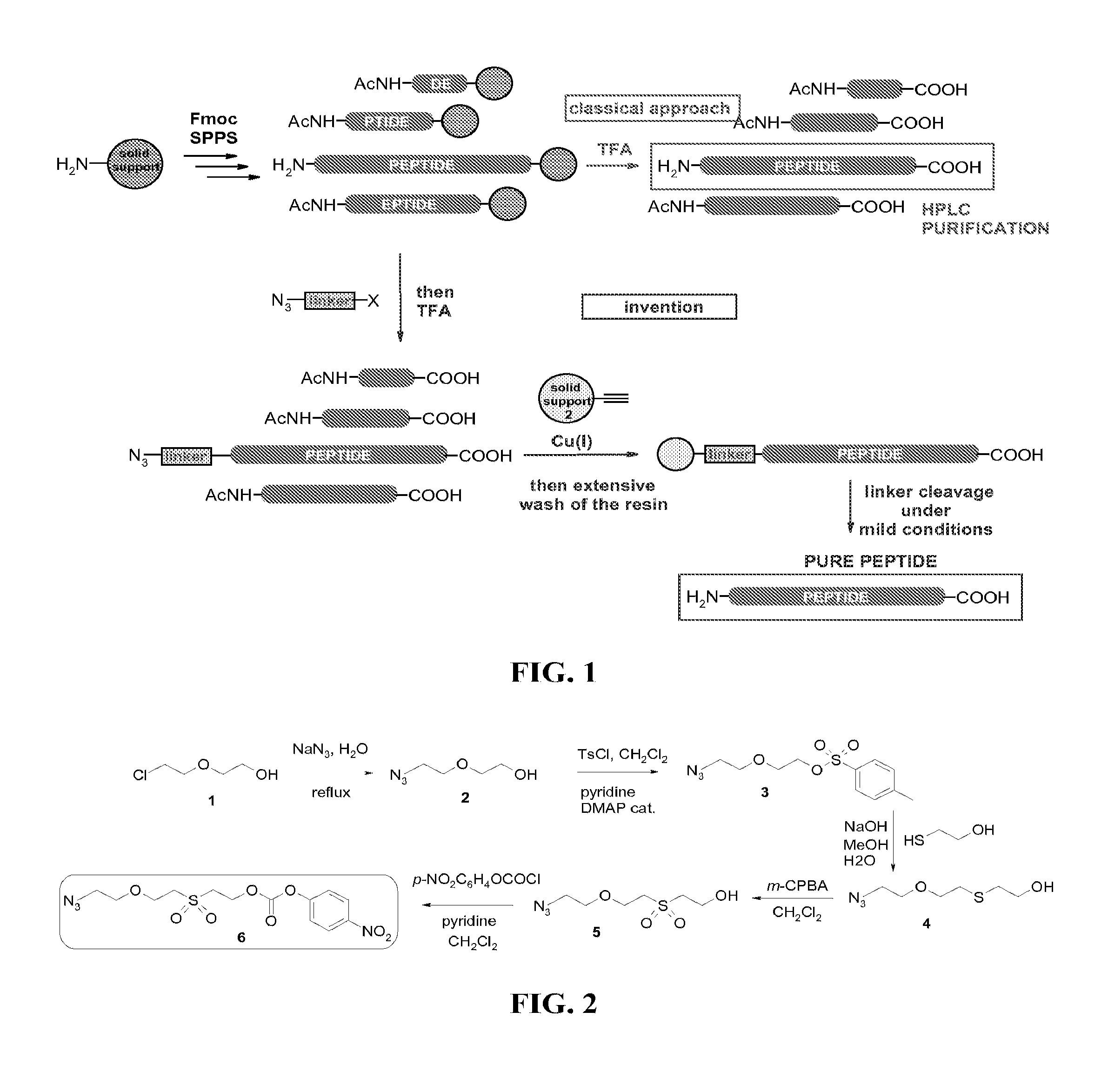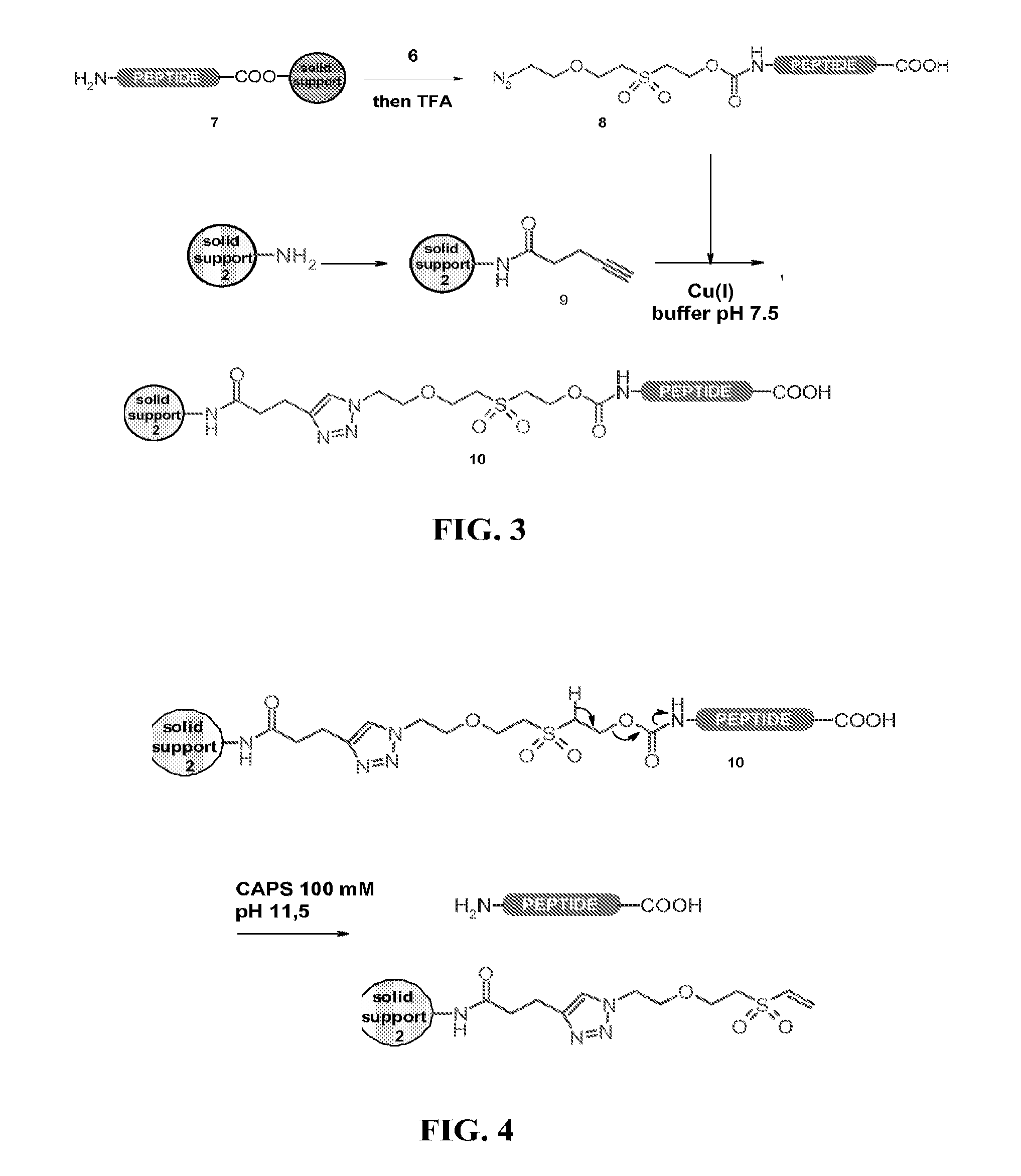Compounds and methods for purifying peptides produced by solid phase peptide synthesis
a technology of solid phase peptides and purification methods, which is applied in the direction of peptides, peptide sources, peptide/protein ingredients, etc., can solve the problems of complex separation process, large number of impurities, and none of these methods has been able to achieve effective one-step separation
- Summary
- Abstract
- Description
- Claims
- Application Information
AI Technical Summary
Benefits of technology
Problems solved by technology
Method used
Image
Examples
examples
[0135]Solid-phase peptide synthesis (SPPS) of the 31-53 fragment of the 97 amino acids protein mitogaligin (said 31-53 fragment of mitogaligin has the following amino acid sequence RGLSWTGTSRRLPWSTWSLSRST, as shown in SEQ ID NO:1) was run on an automated synthesizer 433A from Applied Biosystem using Fmoc / tBu chemistry at a 0.1 mmol scale with HBTU / HOBt as coupling reagents and a Rink resin. The elongation was carried out automatically using a 10-fold excess of protected amino acids and coupling reagents. The side-chain protecting groups used were Arg(Pbf), Ser(tBu), Thr(tBu), Trp(Boc). The 0.1 mmol scale program purchased from the manufacturer was used, with a single coupling followed by capping with acetic anhydride. A double coupling was performed for the introduction of Arg40 and Arg41. The crude peptide was released from the resin with TFA / H2O / iPr3SiH / phenol, 87.5 / 5 / 2.5 / 5 for 2 h, and the peptide was precipitated with ice-cold diethyl ether, recovere...
PUM
| Property | Measurement | Unit |
|---|---|---|
| speed | aaaaa | aaaaa |
| chemical | aaaaa | aaaaa |
Abstract
Description
Claims
Application Information
 Login to View More
Login to View More - R&D
- Intellectual Property
- Life Sciences
- Materials
- Tech Scout
- Unparalleled Data Quality
- Higher Quality Content
- 60% Fewer Hallucinations
Browse by: Latest US Patents, China's latest patents, Technical Efficacy Thesaurus, Application Domain, Technology Topic, Popular Technical Reports.
© 2025 PatSnap. All rights reserved.Legal|Privacy policy|Modern Slavery Act Transparency Statement|Sitemap|About US| Contact US: help@patsnap.com



